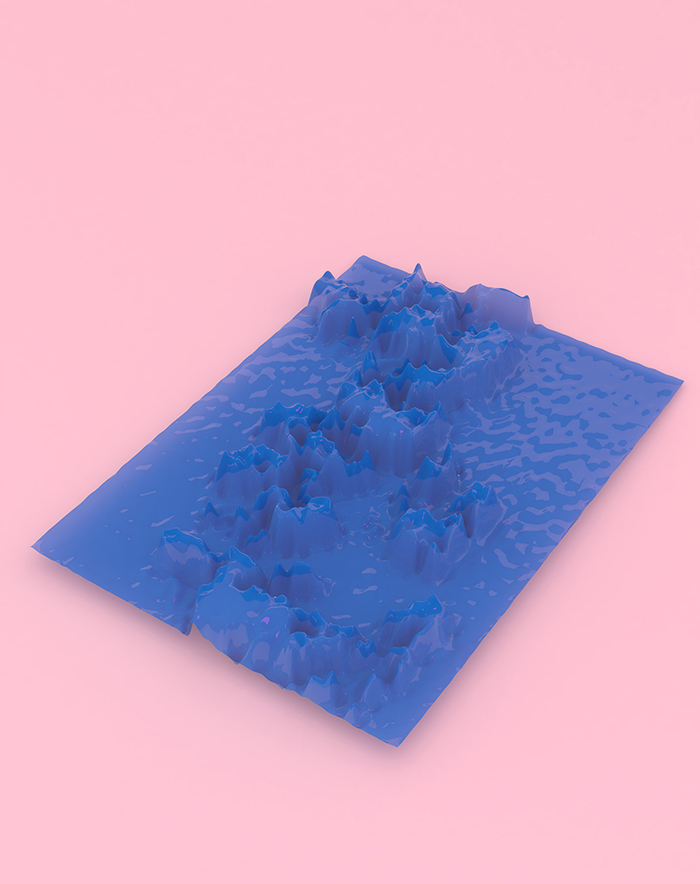LA PREGUNTA DE SUS OJOS
La pregunta de sus ojos springs from an idea of photography as a “phantomic inscription”, linked to a fascination for acheropite images (from Greek “not made by human hands”), sacred icons that exist as a result of a supposed divine manifestation. Impressed directly on a support, they anticipate photography as a technical image.
Claudia Petraroli has investigated the belief regarding the eye pupils of Our Lady of Guadalupe in Mexico. Here in the 1970s, thanks to an enlargement with digital instruments, it was possible to see a complex scene, populated with human figures impossible to paint manually, given the microscopic dimensions. Analyzing them with 3D software you get surfaces that resemble ancestral landscapes. The computer process simulates what happens with the reflection of images on the pupil, where an analogon is produced, but here it is used to make a transformation and to realize some additional objects that seem to come out of a secret, passing through the symbolic dimension to obtain a tangible imprint materialized in space.
Final result of this research are two technological sculptures, sort of real “relics”: the sketch of a supernatural event that uses the automation of a software as a detector.
Project presented in Giovane Fotografia Italiana #05 | LOOP

BIO
CLAUDIA PETRAROLI
(Teramo, IT, 1987)
Her research relates the threshold among the object and its emanation. Addressing the relationship between human and non-human not as synthetic and peaceful coexistence, but as a “state of impermanence”, she investigates the virtual and the actual agency of the object.
Informed by Speculative Realism, Queer Theory, and Anthropology, her practice starts from the analysis of data and materials connected to the mode of mass consumption, to the process of subjectivation and the religious ritual. By adopting a wide range of media, including photograph, video, and sculpture, she transcodes visual and formal property of the elements that she appropriate to renegotiate their function. Occluding and altering the normative qualities of materials, data, and rituals, she refers to them as “identity without essence”. This process of mimetic exacerbation acts to decontextualize and to abstract meanings, in order to extend and increase interpretative possibilities.
After careful manipulations, the artworks are arranged within environments atmospherically connoted. Placed in this ambiguous and weird milieu, they change the ontological condition of the object itself, while nevertheless retaining references to the original status of the latter. In this sense, the artwork objecthood becomes a tool to question the centrality of the subject and renegotiate the terms that define our presence in the world.
Following a non-anthropocentric perspective, her practice aims to conceive the non-human entities as a kind of hidden mirrors, something that exists despite us, but that can still speak about us.




